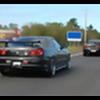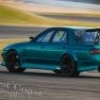Car Difficult To Slide?
Announcements
-
Similar Content
-
Latest Posts
-
I'm with you here. It's either loom has an issue, OR, injectors are not functioning properly. It could even be they're just constantly dribbling, hence the wet, but not firing.
-
Depending on how long the car sat it is very possible for injectors to be stuck open or closed, I'd get them cleaned and flow tested. Other than that, obviously when the loom changes and the car doesn't start any more....the loom is suspect so some tracing / comparing may be required
-
Harness is for a s1 Rb25det, and it is engine and lower harness. the old harness had broken off plugs and was in very rough condition/exposed wires and splices etc. it is not able to be put back on the car, I could visually inspect to see if they had rewired any pins on the ecu plug. The fuel pump definitly isn’t turning off it’s an external pump and very loud you can hear it. Will look at the other harness tonight, am also going to pull the fuel rail and watch the injectors spray, will update here with what I find. Pretty sure at this point it has to be something to do with injectors because car will fire up on starting fluid and cas is clicking the Injectors. Fuel pressure is steady 43psi
-
Check the injectors flow evenly, and are actually flowing what you and the ECU think they should be flowing. If it's starting up on starter fluid, you have a fuel issue. Is it possible under cranking your fuel pump is turning off? The harness you replaced, is that the whole engine harness? Do yourself a test, and drop the old harness on and plug it into the Z32 ECU. It's possible they've wired things different. From memory S1 to S2 is different in RB25 and you may have a wrong loom
-






Recommended Posts
Create an account or sign in to comment
You need to be a member in order to leave a comment
Create an account
Sign up for a new account in our community. It's easy!
Register a new accountSign in
Already have an account? Sign in here.
Sign In Now